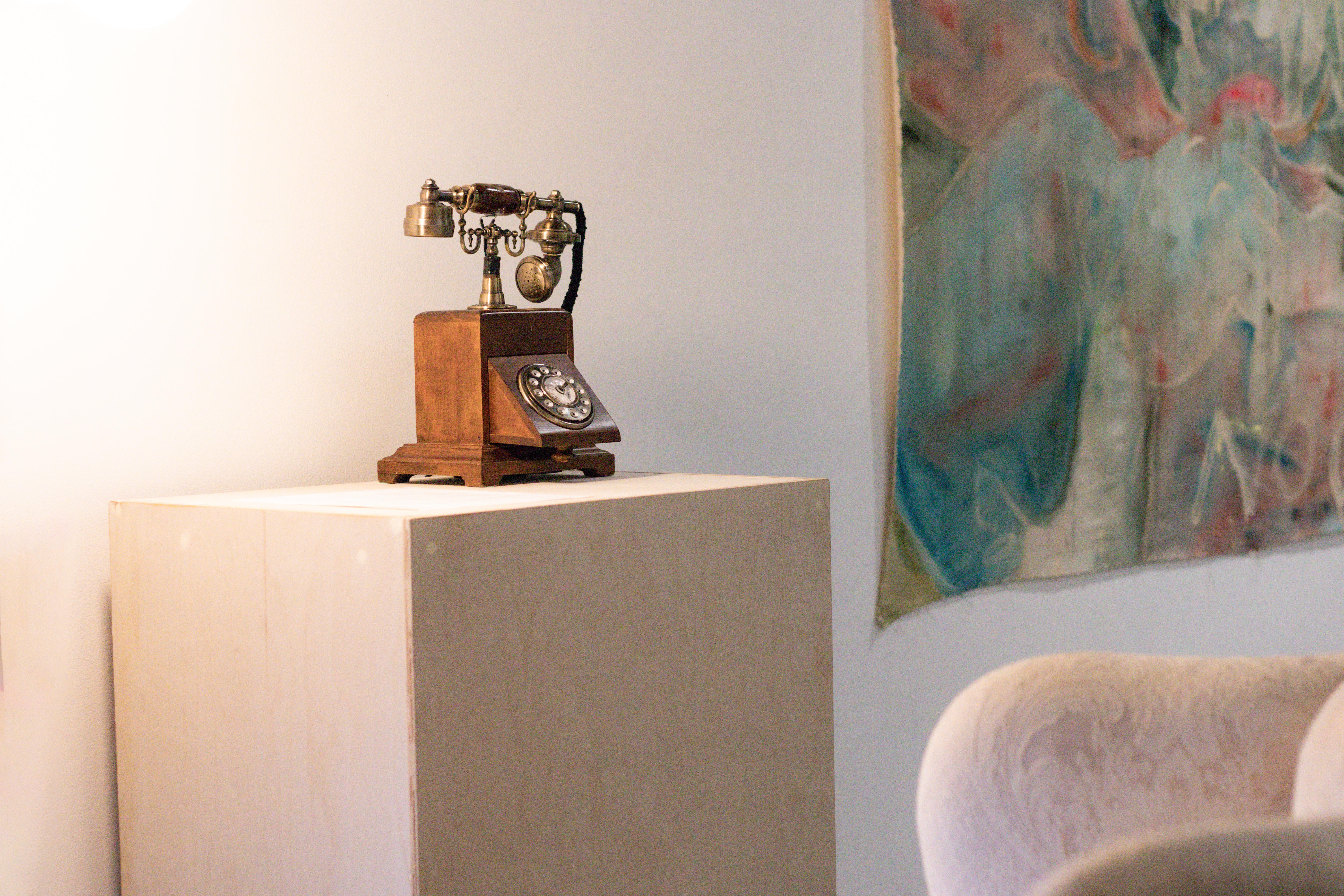EVERYTHING COMES BACK TO YOU
![]()
My practice revolves around what I call incomplete survival strategies—acts that allow us to endure socially, culturally, and emotionally fractured conditions, without the promise of resolution. In a world where structural change has stalled and hyper-individualism dominates, I began to ask: How do we survive—not in victory, but in ongoing contradiction?
This question leads me to fragile images: unsent letters, handheld candles, a rotary telephone playing interviews about guilt. I draw from Hannah Arendt’s notion of the “banality of evil,” as well as the testimonial structure in Haruki Murakami’s Underground, to explore how systems of harm persist not through monstrous acts, but through neglect, silence, and small, ordinary gestures.
Across painting, installation, sound, and printmaking, I explore fragmented identity and cultural memory. In early works, I painted large-scale portraits of magical girl anime figures—heroines who sacrifice themselves in order to be loved. They mirrored the feeling of erasing oneself to meet cultural expectations. Later, I created candle sculptures in ceramic holders, referencing Korean candlelight vigils—quiet rituals of protest and friendship.
My most recent project, Hangnails, is a sound and video based installation where viewers pick up a phone to hear reflections on filial duty and inherited shame. The piece asks how small, persistent feelings—like the sting of a hangnail—continue to shape us even when they’re no longer visible. Centered around an old telephone retrieved from my grandmother's hometown in Korea, the piece invites the audience to listen to recorded interviews with individuals of diverse ethnic and national backgrounds, reflecting on heritage, self-perception, and familial relationships. As the project continues, I am expanding the experiment into a new phase - questioning whether concepts like filial piety and identity, and of course errors between them, so fragile and culturally rooted, can be interpreted, learned, or even distorted through artificial minds.
What does it mean to care for something even when you can’t fully understand it? My work suggests that misreadings, misunderstandings, and blurred boundaries are not failures of communication, but proof that we are trying. Through soft objects and uncertain forms, I want to create space for viewers to reflect—not on what they know, but on what they sense.
![]()
![]()

My practice revolves around what I call incomplete survival strategies—acts that allow us to endure socially, culturally, and emotionally fractured conditions, without the promise of resolution. In a world where structural change has stalled and hyper-individualism dominates, I began to ask: How do we survive—not in victory, but in ongoing contradiction?
This question leads me to fragile images: unsent letters, handheld candles, a rotary telephone playing interviews about guilt. I draw from Hannah Arendt’s notion of the “banality of evil,” as well as the testimonial structure in Haruki Murakami’s Underground, to explore how systems of harm persist not through monstrous acts, but through neglect, silence, and small, ordinary gestures.
Across painting, installation, sound, and printmaking, I explore fragmented identity and cultural memory. In early works, I painted large-scale portraits of magical girl anime figures—heroines who sacrifice themselves in order to be loved. They mirrored the feeling of erasing oneself to meet cultural expectations. Later, I created candle sculptures in ceramic holders, referencing Korean candlelight vigils—quiet rituals of protest and friendship.
My most recent project, Hangnails, is a sound and video based installation where viewers pick up a phone to hear reflections on filial duty and inherited shame. The piece asks how small, persistent feelings—like the sting of a hangnail—continue to shape us even when they’re no longer visible. Centered around an old telephone retrieved from my grandmother's hometown in Korea, the piece invites the audience to listen to recorded interviews with individuals of diverse ethnic and national backgrounds, reflecting on heritage, self-perception, and familial relationships. As the project continues, I am expanding the experiment into a new phase - questioning whether concepts like filial piety and identity, and of course errors between them, so fragile and culturally rooted, can be interpreted, learned, or even distorted through artificial minds.
What does it mean to care for something even when you can’t fully understand it? My work suggests that misreadings, misunderstandings, and blurred boundaries are not failures of communication, but proof that we are trying. Through soft objects and uncertain forms, I want to create space for viewers to reflect—not on what they know, but on what they sense.






